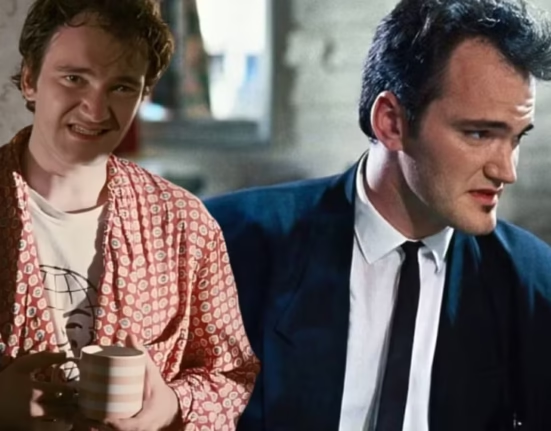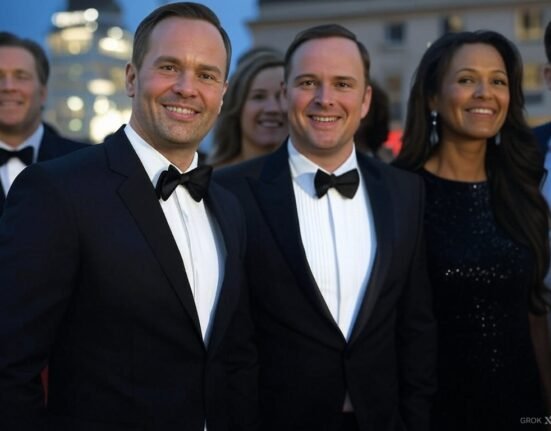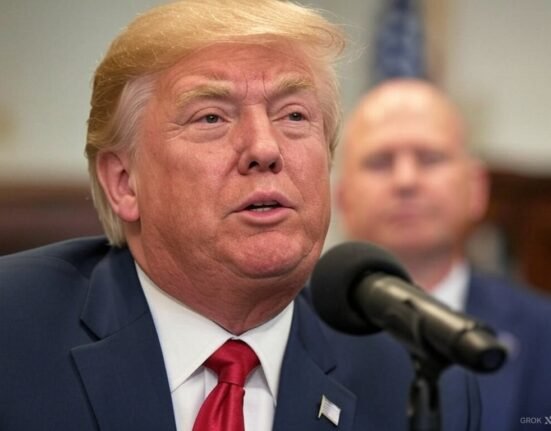The New York Yankees, a storied franchise in Major League Baseball, demonstrated a keen interest in acquiring superstar outfielder Juan Soto during the winter transfer period. Soto, recognized for his exceptional batting prowess and defensive capabilities, represented an attractive target for the Yankees, who were eager to enhance their roster. The addition of such a talented player would not only strengthen their lineup but also significantly elevate the team’s competitive prospects in the upcoming season.
The significance of Juan Soto’s potential addition cannot be understated. His proven track record, including multiple All-Star selections and a consistent ability to get on base, aligns with the Yankees’ objective to reclaim their status as a championship contender. Moreover, Soto’s youth and skillset fit perfectly into the franchise’s long-term vision, which emphasizes building a robust roster capable of competing at a high level for years to come. This strategy underscores the organization’s commitment to success and excellence.
Hal Steinbrenner, the Yankees’ managing general partner, actively spearheaded this pursuit. His direct involvement included a notable cross-country meeting with Soto and his agent, showcasing a level of seriousness and ambition rarely seen in the sport’s high-stakes negotiations. Steinbrenner’s engagement symbolizes the franchise’s dedication to attracting top talent and revitalizing the team’s performance, particularly after recent seasons that fell short of expectations. The Yankees’ effort to secure Soto reflects a broader strategy aimed at positioning the team for future success while resonating with the passionate fan base that supports them.
Soto’s Value to the Yankees
Juan Soto, one of Major League Baseball’s most promising talents, has consistently been recognized for his exceptional abilities at the plate and his overall contributions to the teams he has played for. His potential significance to the New York Yankees cannot be understated. Soto’s unparalleled batting skills, combined with his younger age, made him a highly sought-after player in the league. His career statistics speak volumes, illustrating an impressive on-base percentage and slugging that would enhance any lineup.
Primarily recognized as an elite hitter, Soto exhibits an extraordinary knack for working counts, demonstrating patience and discipline that often result in walks or well-placed hits. His offensive prowess positions him as a driving force within the batting order, capable of both anchoring the lineup and creating opportunities for his teammates. During his tenure with the Washington Nationals, Soto was instrumental in their success, especially during their 2019 World Series championship run, where he delivered critical performances throughout the postseason.
Moreover, Soto’s ability to consistently produce runs through both home runs and extra-base hits makes him an essential asset for any club aiming for postseason aspirations. With the Yankees’ aspirations for a championship, his addition would have been an effective strategy to bolster their lineup against formidable playoff competition. Furthermore, Soto’s versatility in the outfield adds an additional layer of value, allowing for defensive flexibility in various lineup configurations.
While the Yankees are now moving forward post-Soto, it is essential to consider the broader implications of his departure. The Yankees had deemed Soto paramount for their championship ambitions. His skill set, championship experience, and youth strongly aligned with the Yankees’ mission to reclaim their status as a dominant force in baseball, thus making Soto’s value to the franchise undeniably significant.
The Competitive Landscape: Other Interested Parties
The pursuit of Juan Soto illustrates the shifting dynamics within Major League Baseball, particularly as teams adjust their strategies in light of the burgeoning talent available. As Soto transitioned to the Dallas organization, it became evident that several other teams were also vying for his signature, indicating his substantial value within the league. The interest from such organizations often incentivizes teams like the Yankees to recalibrate their approaches in drafting and trading players.
Furthermore, the increasing involvement of multiple franchises in the race for Soto’s talents highlighted the importance of maintaining a competitive edge in talent acquisition. For the Yankees, the intense competition from other teams underscored the necessity for a strategic reevaluation in their player development and scouting programs. The likelihood of missing out on a generational talent like Soto could motivate the Yankees to explore alternative avenues, either through trades or free agency, to bolster their roster amid stiff competition.
Throughout this process, the Yankees must remain cognizant of the shifting landscape of the league. The influx of offers for Soto exemplified a broader trend where organizations are increasingly willing to invest in high-profile players, thereby challenging traditional power dynamics in the sport. Moving forward, the Yankees must not only navigate their internal strategy but also carefully monitor the actions and intentions of their competition in an evolving baseball environment.
The Financial Considerations: Yankees in Deeper Waters
The New York Yankees have long been recognized as one of Major League Baseball’s most financially robust franchises. However, with the recent developments regarding Juan Soto’s transition to the Dallas team, the Yankees face renewed financial implications that merit careful analysis. Soto’s acquisition would have required a substantial financial commitment, highlighting the Yankees’ willingness to invest heavily in top-tier talent. Such investments are often capitalized through considerable cash outlays, which can influence both current operations and future salary commitments.
Investing in high-profile players like Soto has far-reaching economic consequences beyond the immediate impact. The Yankees must thoughtfully evaluate how such a significant contract would fit within their overarching payroll structure. The pursuit of Soto underscores a strategic initiative that reflects a broader desire to maintain competitive prowess. However, this ambition raises questions about the flexibility of future contract negotiations with existing key players, along with their ability to secure up-and-coming talent.
Furthermore, the operational budget could potentially face constraints as the organization balances current salary cap considerations with the prospect of sustaining a winning team. In essence, every financial maneuver leads to a ripple effect, wherein decisions made in the present can profoundly impact future expenditures. This scenario places an emphasis on meticulous financial planning as the Yankees navigate a landscape where the talent pool and market conditions continuously evolve.
As the Yankees reconsider their strategic direction in the aftermath of missing out on Soto, the organization still bears the financial burden of maintaining competitiveness in a landscape characterized by aggressive spending. Ultimately, while the Yankees may not have expanded their financial commitments to Soto, the implications of this pursuit certainly illuminate the intricacies of balancing expenditure, competitive aspirations, and future endeavors in the challenging world of professional sports.
Recognizing the Need for a Backup Plan
As the Yankees navigated the complexities of the offseason, it became increasingly evident that retaining star player Juan Soto was becoming an uphill battle. With Soto’s unexpected move to Dallas, the team’s front office recognized the necessity of reevaluating their roster plans. This situation compelled the Yankees to think critically about their strategic approach in a highly competitive environment. The realization set in that a contingency plan was essential to maintain competitiveness in the league.
During meetings among executives, a brainstorming session unfolded as the team explored various alternatives to reinforce their lineup. The decision-making process revolved around a few key principles: understanding market dynamics, player availability, and the long-term vision of the organization. Given that retaining Soto might no longer be realistic, the Yankees’ executives began formulating a strategic ‘plan B’ that would not only address current gaps but also align with their future objectives.
Discretion was paramount throughout this process. The front office needed to remain cautious while evaluating potential targets to avoid tipping their hat to rival teams. Maintaining confidentiality in their negotiations allowed them the necessary leverage to explore diverse options. This maneuvering involved engaging with various agents and organizations while simultaneously assessing internal prospects that could step up in the wake of Soto’s departure. The organization’s commitment to excellence ensured that any potential acquisitions would complement existing talent and address specific weaknesses effectively.
Ultimately, the Yankees’ proactive approach in recognizing the need for a backup plan underscores their resolve to remain a formidable force within the league. The emphasis on adaptability is crucial for navigating the shifting landscape of baseball, especially at a time when maintaining competitiveness is more challenging than ever.
The Turning Point: Soto’s Decision to Join the Mets
Juan Soto’s transition from the Washington Nationals to the New York Mets marks a significant turning point in the current MLB landscape. The negotiations leading to Soto’s signing revealed not only the player’s immense talent but also the strategic shifts among competing teams, particularly the New York Yankees. Ultimately, Soto signed a 13-year contract worth $350 million, a figure that solidified his status as one of the game’s premier hitters while also highlighting the financial commitment the Mets are willing to make to secure top-tier talent.
The Yankees had been eyeing Soto as a potential cornerstone for their franchise. His exceptional on-base skills and power-hitting abilities were expected to bolster their lineup significantly. However, as negotiations progressed, it became clear that Soto preferred the vision and roster talent offered by the Mets. This decision undoubtedly changes the dynamics within the East Division, as the Yankees are now forced to recalibrate their strategies in pursuit of their own competitive edge.
Furthermore, Soto’s departure from the Nationals disrupted the balance of power in the division. With the Mets now reinforcing their roster, the Yankees may need to explore alternative acquisition strategies, whether through trades or free agency, to maintain their status as a playoff contender. Continually evaluating player performance and market demands will be critical as they navigate the ensuing challenges. The implications of Soto’s contract extend far beyond his individual contributions; they compel the Yankees to adapt to a rapidly evolving environment in Major League Baseball.
In parallel with Soto’s impactful decision, the Yankees’ front office will need to assess their current roster to identify gaps and areas of potential improvement. As they move forward, they must prioritize adjustments that align with their long-term momentum and competitive aspirations.
Immediate Reactions from the Yankees’ Front Office
Following the announcement of Juan Soto’s signing with the New York Mets, the New York Yankees’ front office responded with a mixture of pragmatism and strategic recalibration. The signing of Soto, a player of considerable caliber, represents a significant shift in the competitive landscape of the league. This prompted immediate reflections and statements from key figures within the Yankees organization.
General Manager Brian Cashman was swift to address both the media and fans regarding this pivotal development. In a public statement, he acknowledged Soto’s impressive career and cited the challenge the Yankees face in remaining competitive within an increasingly unpredictable division. Cashman emphasized the need for the Yankees to remain focused on their long-term goals despite this immediate setback. He stated, “While we respect Soto’s decision, our aim is to build a team that can contend for the World Series.” This sentiment was echoed by team president Randy Levine, who highlighted the importance of continuing to invest in talent development and maintaining a focus on their existing roster.
Internally, discussions among the management and coaching staff reflected a sense of urgency to devise fresh strategies. Sources close to the organization indicated that the Yankees may expedite their scouting efforts to identify emerging talent capable of filling the power void left within the outfield. This aligns with the club’s commitment to not only react to significant roster changes but also capitalize on developing a competitive team through innovative means.
On social media, reactions from analysts and fans underscored the heightened tensions in the New York baseball rivalry. The Yankees’ management appears aware of public sentiment and is preparing to navigate the challenges posed by Soto’s move. As the front office takes stock of its options, it is clear that the challenges presented by the shifting dynamics in the division will require not just immediate reactions but a sustained, strategic approach moving forward.
Adjusting Strategies: The Future of Yankees’ Offseason Moves
Following the unexpected transition of star player Juan Soto to the Dallas roster, the New York Yankees find themselves at a critical juncture in their offseason planning. The departure of such a high-profile talent necessitates a reevaluation of their strategies in order to maintain competitiveness in the league. The Yankees’ management will need to explore alternative targets to fill the void left by Soto, who had become a cornerstone of their offense.
One potential avenue for the Yankees is to pursue free-agent outfielders who can provide a combination of power and speed. Names like Cody Bellinger and Kevin Gausman come to mind as viable options that could bring a dynamic presence to the Yankees’ lineup. In addition, the franchise may also consider making trades for notable players who are dissatisfied with their current teams. This could involve a proactive approach, engaging in conversations with teams that may be looking to offload talent without breaking the bank. It is essential that the Yankees leverage their resources effectively to find players who align with their strategic objectives.
Moreover, the Yankees might also invest in their farm system, promoting younger talents who demonstrate significant potential. By integrating homegrown players into the roster, the organization not only saves on financial expenditures but also fosters a sense of loyalty and dedication within the team. This blend of strategies, from free-agent acquisitions to tapping into the youth pipeline, will be crucial in reshaping the team’s identity following Soto’s exit.
Overall, the Yankees are faced with the task of adjusting their offseason strategies to remain competitive in an ever-evolving landscape. By exploring alternative targets and embracing a multifaceted approach, they can position themselves for success in the upcoming season.
Conclusion: Looking Ahead for the Yankees
As the dust settles on the recent signing of Juan Soto by the New York Mets, it is clear that the New York Yankees face a pivotal moment in their organizational strategy. This significant shift in the competitive landscape of Major League Baseball prompts a reassessment of the Yankees’ roster and approach as they navigate the forthcoming season. With Soto now a rival player, the Yankees must recalibrate their focus to maintain their status as a dominant force in the league.
The Yankees currently find themselves facing considerable challenges. They need to address gaps in their lineup, particularly in the outfield, where Soto’s competitive presence would have had a profound impact. By actively seeking talented free agents or potential trades, the team can bolster their roster and prepare for the upcoming season. It is essential that the organization not only seeks immediate improvements but also looks to nurture young talent from within their farm system to build a sustainable future.
Despite these challenges, there remains an air of optimism surrounding the Yankees. The organization has a rich history of resilience and adaptability, characteristics that their loyal fanbase continues to expect. The leadership within the team is well-equipped to oversee this transition, emphasizing a blend of strategic acquisitions and developmental focus to secure future success. Moreover, their strong financial backing positions them favorably in free agency, allowing for bold moves when necessary.
In conclusion, the Yankees stand at a crossroads following Soto’s departure to the Mets. While the road ahead may be fraught with obstacles, the potential for reinvigoration remains strong. By thoughtfully addressing their current needs and fostering the growth of young prospects, the Yankees can preserve their reputation as one of baseball’s most storied franchises and work towards reclaiming their place at the top of the league. The commitment to excellence and a winning culture will undoubtedly shape the narrative for the seasons to come.













Leave feedback about this